Abstract
1. We have previously shown that salbutamol induced hypokalaemia, like adrenaline induced hypokalaemia, is the result of stimulation of a membrane bound beta 2-adrenoreceptor linked to Na+/K+ ATPase. We have also demonstrated that adrenaline induced hypokalaemia is potentiated by therapeutic concentrations of theophylline. 2. In a single-blind study of 14 normal volunteers, we infused salbutamol in doses used in clinical practice and examined the effects of the addition of theophylline alone or combined with (-)-adrenaline on plasma potassium levels, heart rate and blood pressure. The combinations studied were (i) salbutamol + vehicle control adrenaline infusion + placebo theophylline; (ii) salbutamol + vehicle control adrenaline infusion + theophylline; (iii) salbutamol + adrenaline + theophylline. 3. In a randomised, balanced placebo controlled design oral slow release theophylline or placebo was given for 9 days. Subjects were studied twice on the active limb (days 7 and 9) and once on the placebo limb (day 9) and the procedure was identical on each of the 3 study days except for the solutions administered. 4. Theophylline increased salbutamol induced hypokalaemia and in some individuals profound hypokalaemia (less than 2.5 mmol l-1) was observed with these relatively low doses of salbutamol and theophylline. Adrenaline did not further increase the magnitude of the fall in potassium observed. Combining theophylline with salbutamol increased the tachycardia resulting from the salbutamol infusion. Salbutamol infusion caused a fall in diastolic and rise in systolic blood pressure on all 3 study days and this was not altered by either theophylline or adrenaline alone or together.(ABSTRACT TRUNCATED AT 250 WORDS)
Full text
PDF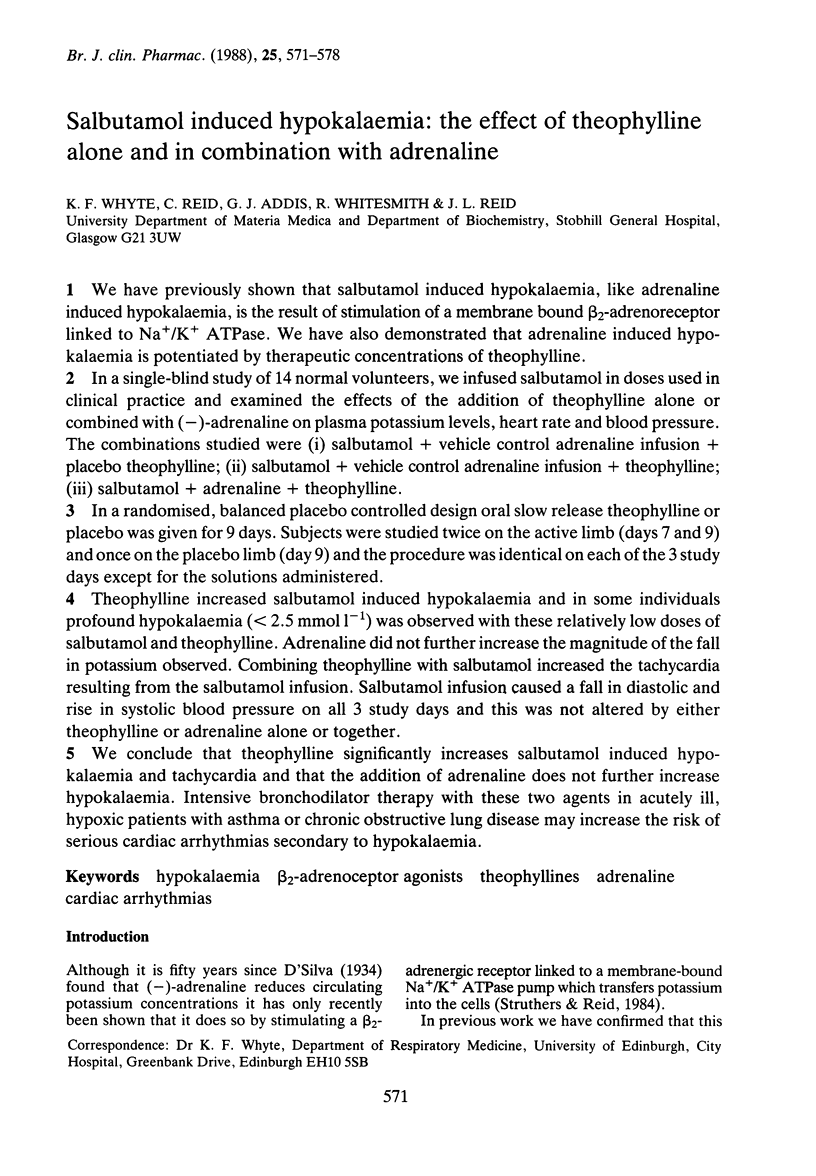
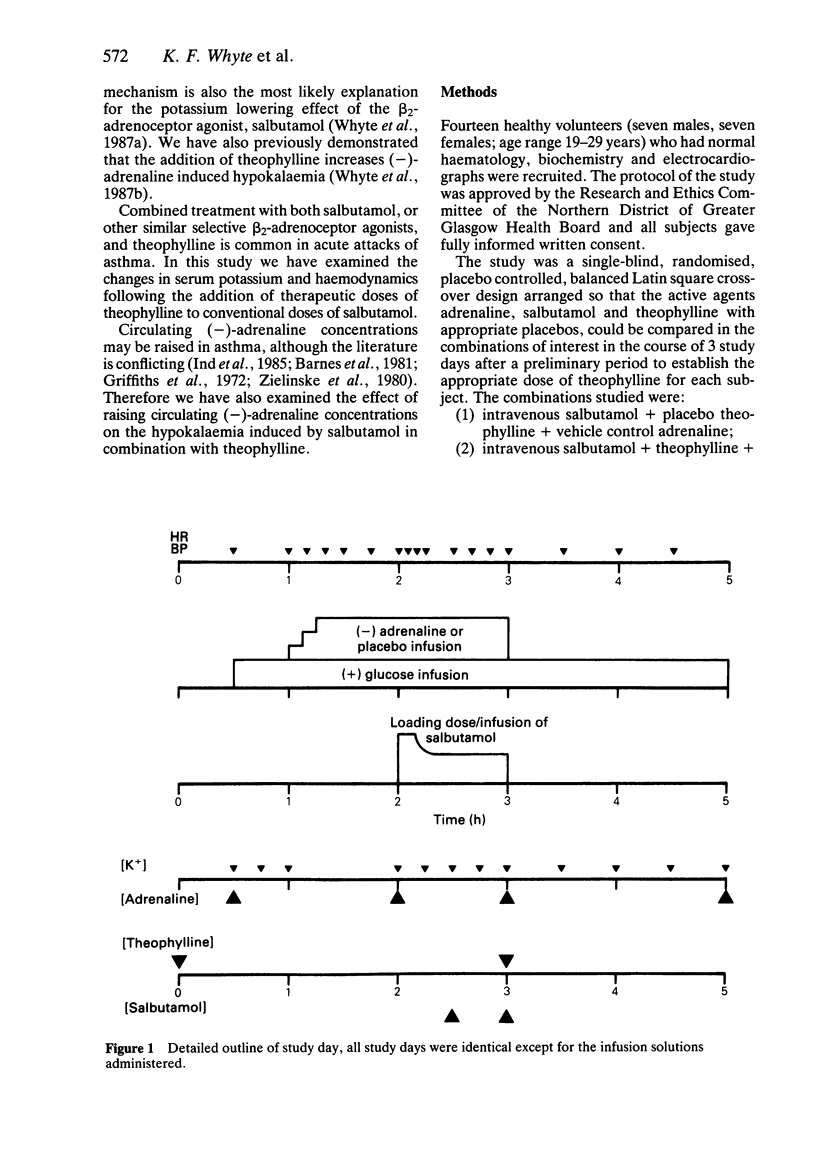
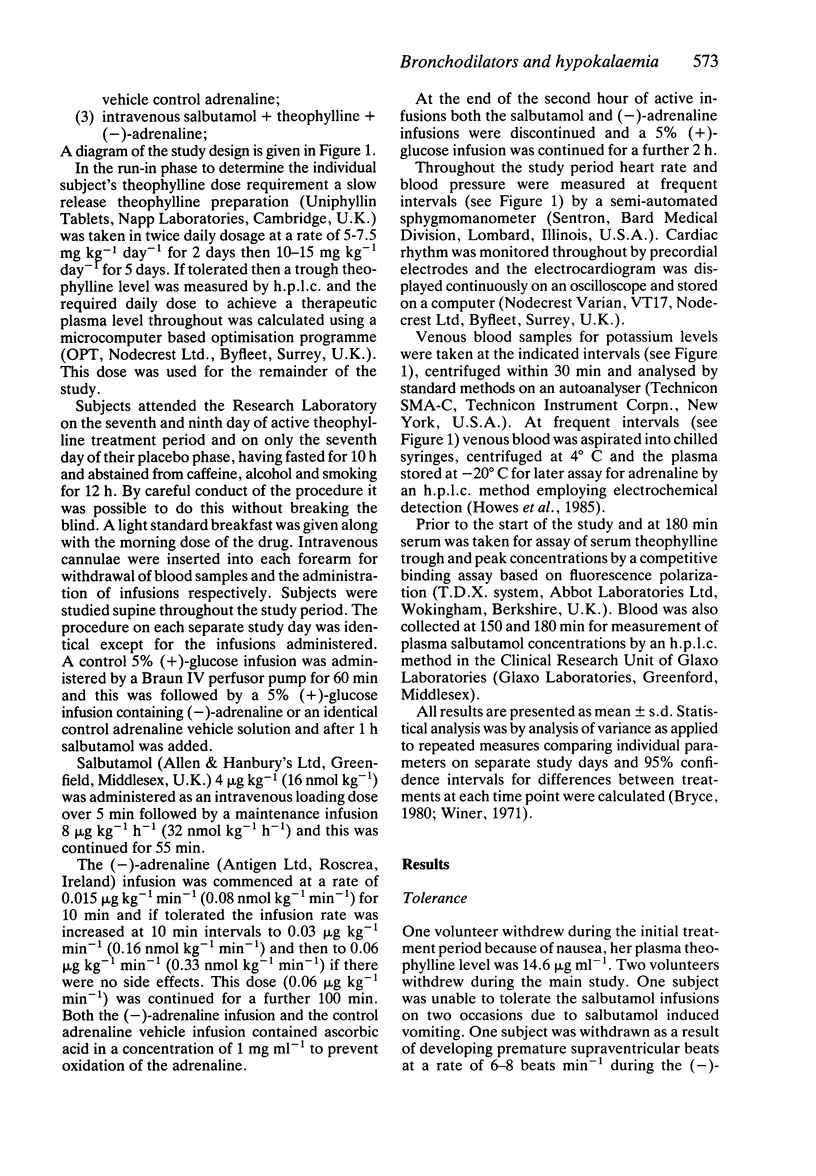
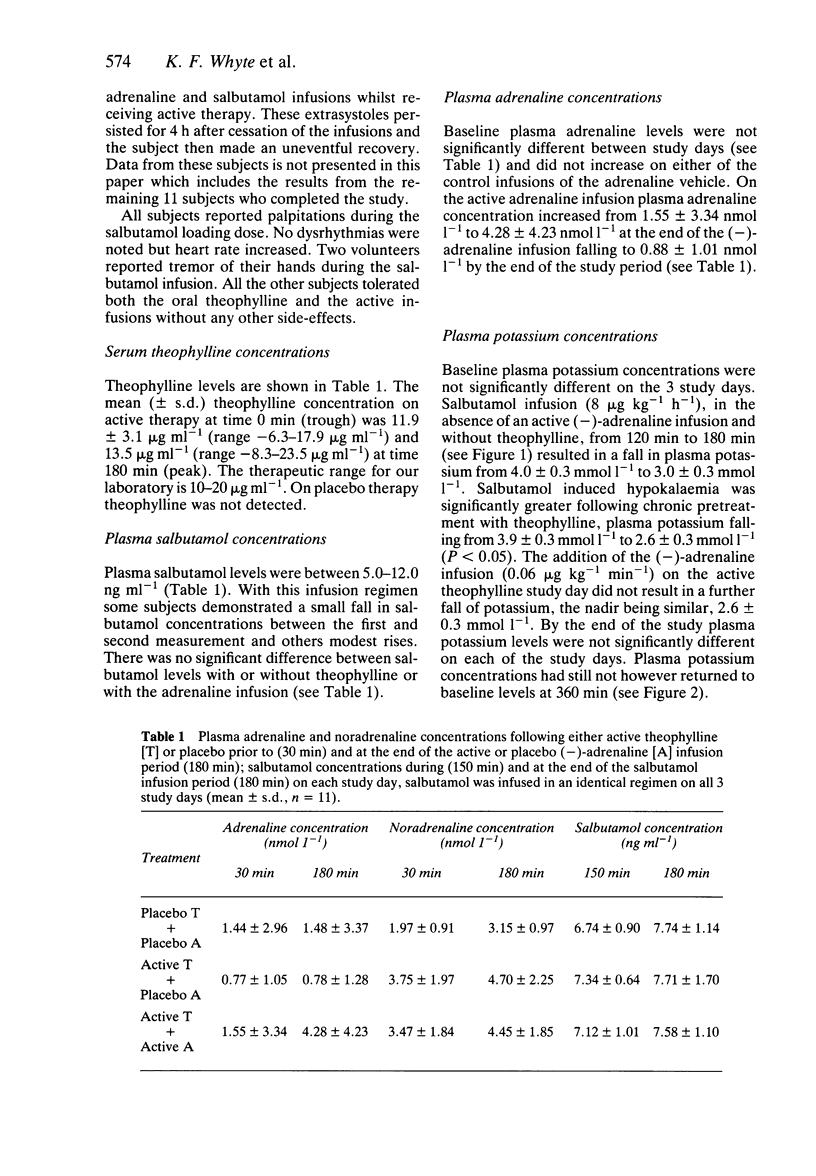
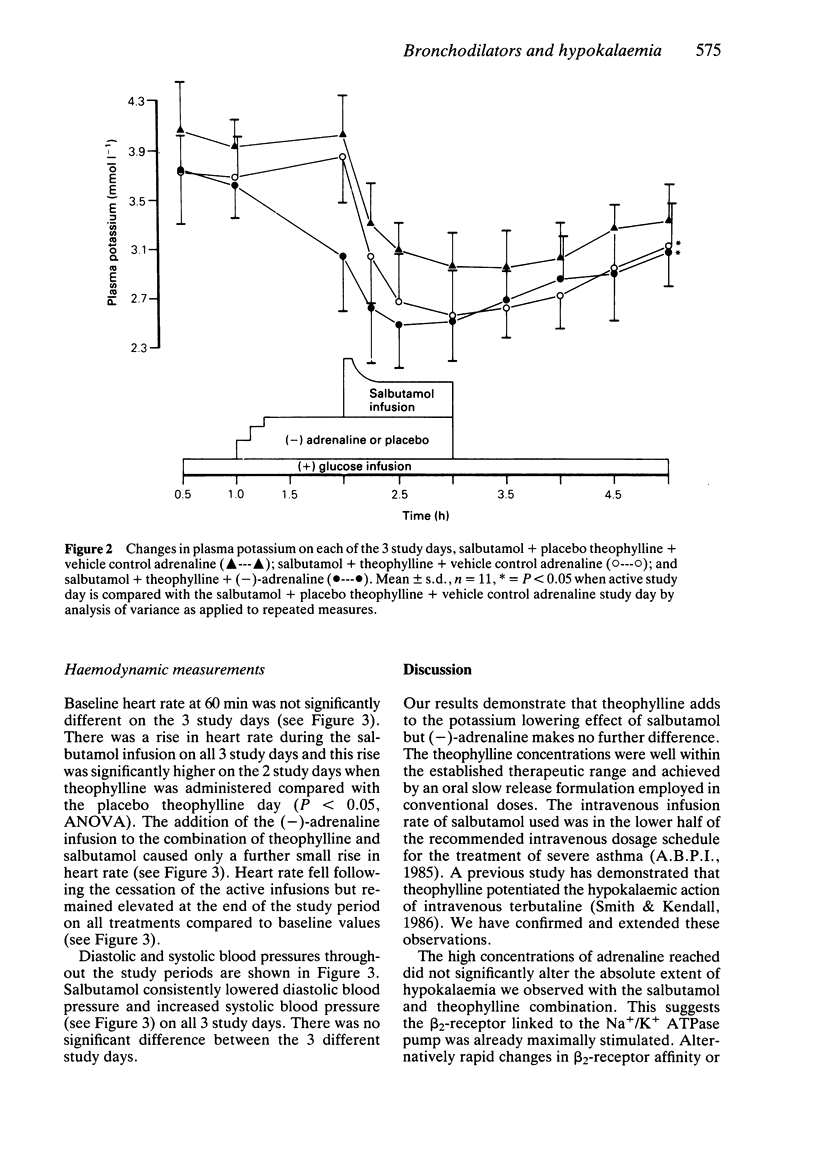
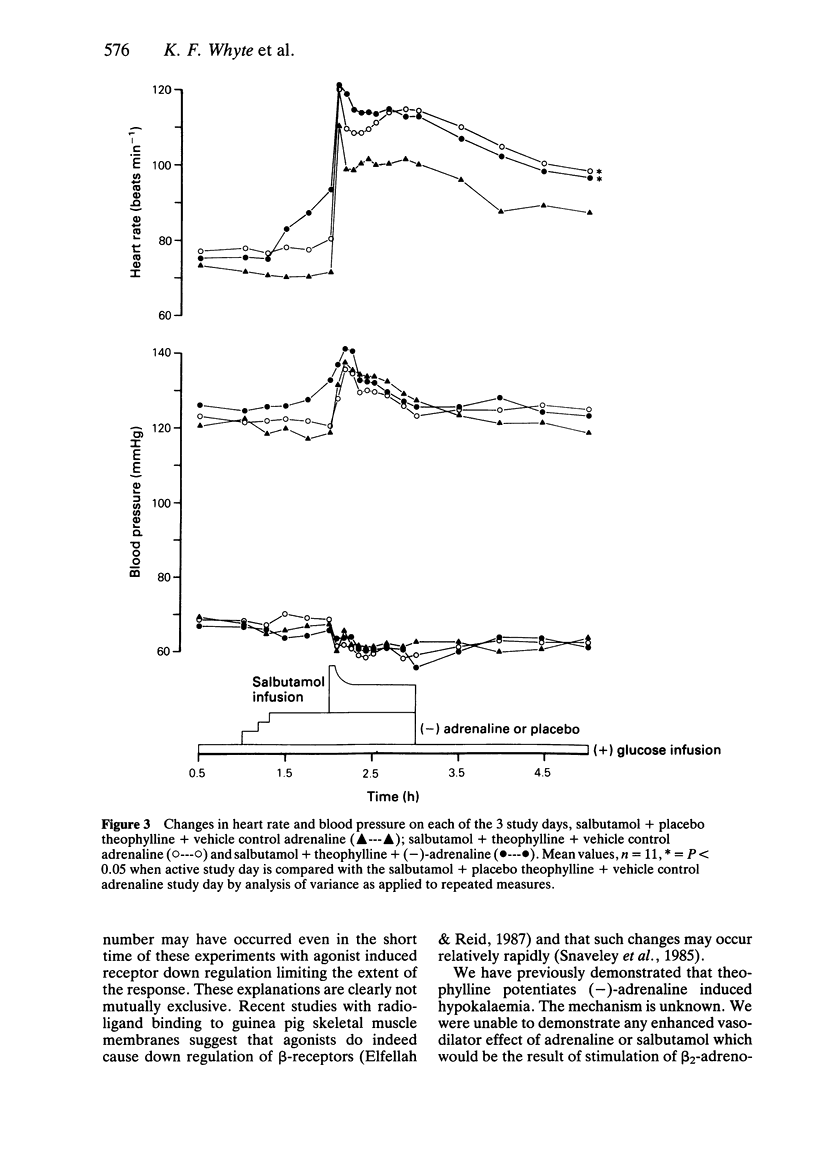
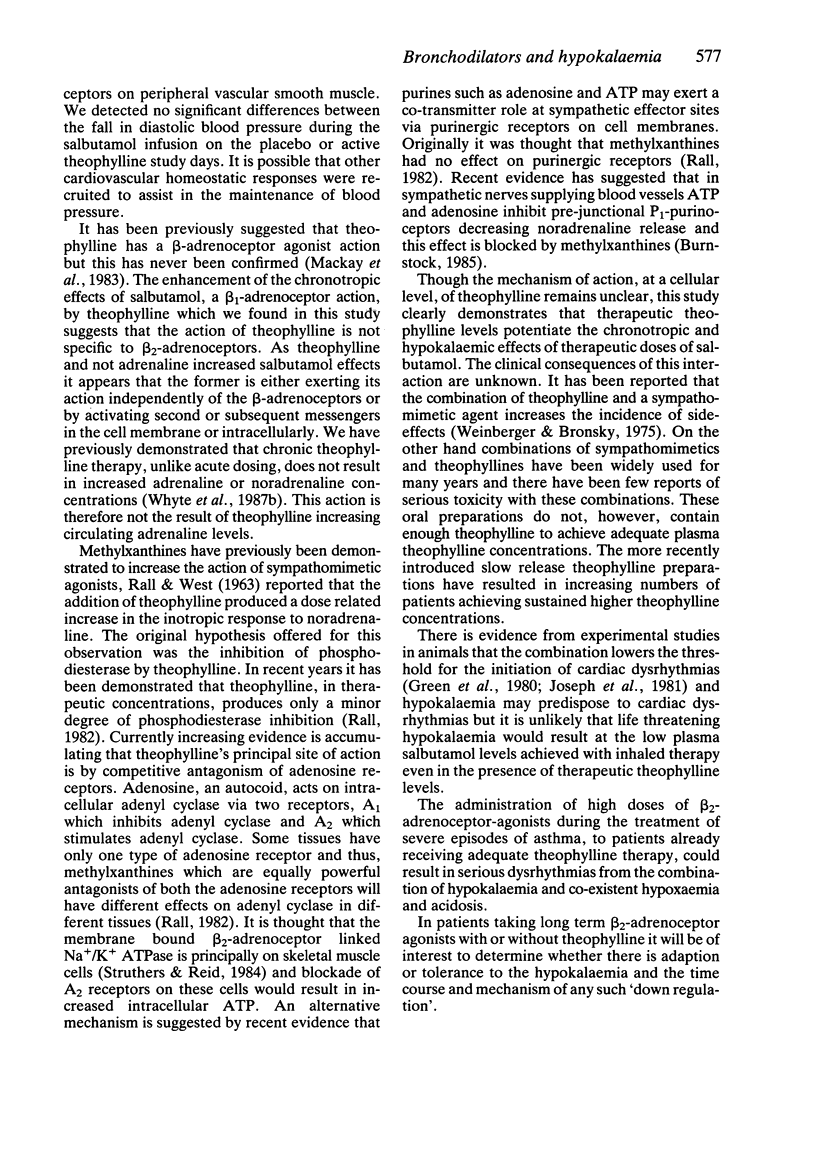
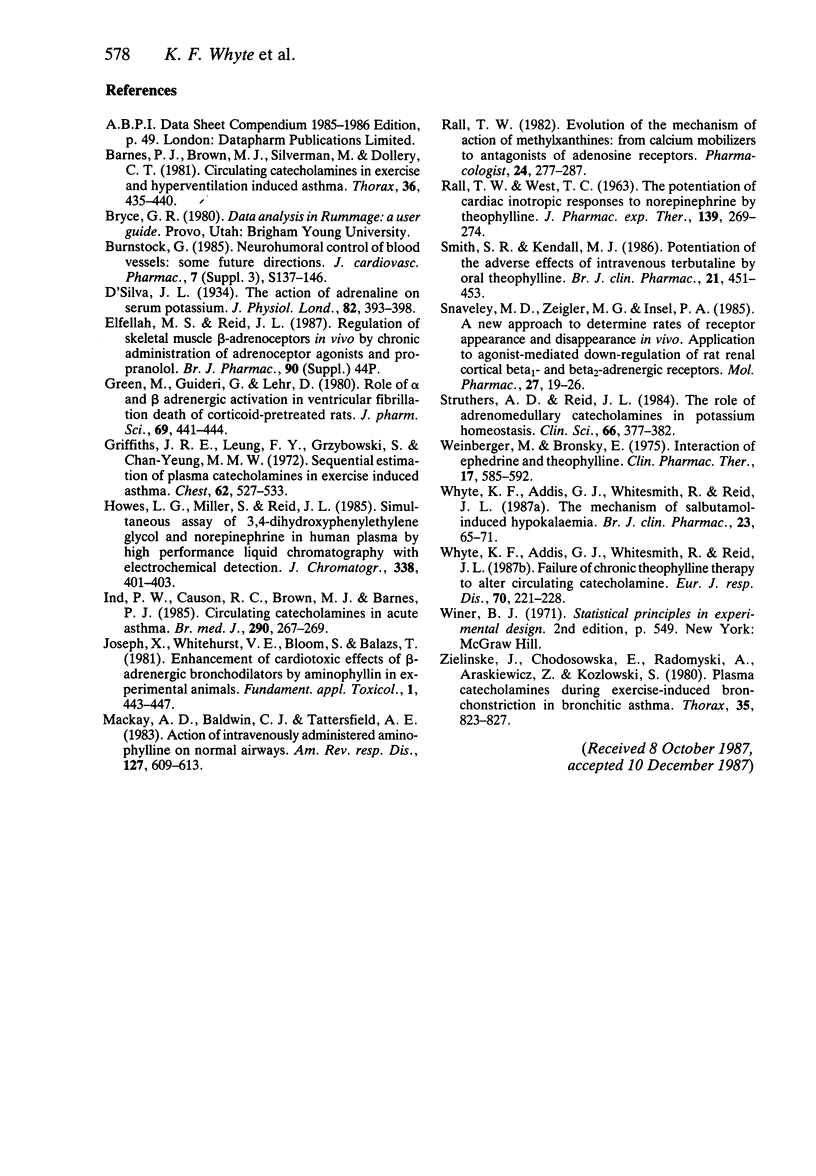
Selected References
These references are in PubMed. This may not be the complete list of references from this article.
- Barnes P. J., Brown M. J., Silverman M., Dollery C. T. Circulating catecholamines in exercise and hyperventilation induced asthma. Thorax. 1981 Jun;36(6):435–440. doi: 10.1136/thx.36.6.435. [DOI] [PMC free article] [PubMed] [Google Scholar]
- Burnstock G. Neurohumoral control of blood vessels: some future directions. J Cardiovasc Pharmacol. 1985;7 (Suppl 3):S137–S146. doi: 10.1097/00005344-198500073-00016. [DOI] [PubMed] [Google Scholar]
- D'Silva J. L. The action of adrenaline on serum potassium. J Physiol. 1934 Nov 12;82(4):393–398. doi: 10.1113/jphysiol.1934.sp003190. [DOI] [PMC free article] [PubMed] [Google Scholar]
- Green M., Guideri G., Lehr D. Role of alpha- and beta-adrenergic activation in ventricular fibrillation death of corticoid-pretreated rats. J Pharm Sci. 1980 Apr;69(4):441–444. doi: 10.1002/jps.2600690420. [DOI] [PubMed] [Google Scholar]
- Griffiths J., Leung F. Y., Grzybowski S., Chan-Yeung M. M. Sequential estimation of plasma catecholamines in exercise-induced asthma. Chest. 1972 Nov;62(5):527–533. doi: 10.1378/chest.62.5.527. [DOI] [PubMed] [Google Scholar]
- Howes L. G., Miller S., Reid J. L. Simultaneous assay of 3,4-dihydroxyphenylethylene glycol and norepinephrine in human plasma by high-performance liquid chromatography with electrochemical detection. J Chromatogr. 1985 Mar 22;338(2):401–403. doi: 10.1016/0378-4347(85)80111-0. [DOI] [PubMed] [Google Scholar]
- Ind P. W., Causon R. C., Brown M. J., Barnes P. J. Circulating catecholamines in acute asthma. Br Med J (Clin Res Ed) 1985 Jan 26;290(6464):267–269. doi: 10.1136/bmj.290.6464.267. [DOI] [PMC free article] [PubMed] [Google Scholar]
- Joseph X., Whitehurst V. E., Bloom S., Balazs T. Enhancement of cardiotoxic effects of beta-adrenergic bronchodilators by aminophylline in experimental animals. Fundam Appl Toxicol. 1981 Nov-Dec;1(6):443–447. doi: 10.1016/s0272-0590(81)80025-5. [DOI] [PubMed] [Google Scholar]
- Mackay A. D., Baldwin C. J., Tattersfield A. E. Action of intravenously administered aminophylline on normal airways. Am Rev Respir Dis. 1983 May;127(5):609–613. doi: 10.1164/arrd.1983.127.5.609. [DOI] [PubMed] [Google Scholar]
- RALL T. W., WEST T. C. The potentiation of cardiac inotropic responses to norepinephrine by theophylline. J Pharmacol Exp Ther. 1963 Mar;139:269–274. [PubMed] [Google Scholar]
- Smith S. R., Kendall M. J. Potentiation of the adverse effects of intravenous terbutaline by oral theophylline. Br J Clin Pharmacol. 1986 Apr;21(4):451–453. doi: 10.1111/j.1365-2125.1986.tb05221.x. [DOI] [PMC free article] [PubMed] [Google Scholar]
- Snavely M. D., Ziegler M. G., Insel P. A. A new approach to determine rates of receptor appearance and disappearance in vivo. Application to agonist-mediated down-regulation of rat renal cortical beta 1- and beta 2-adrenergic receptors. Mol Pharmacol. 1985 Jan;27(1):19–26. [PubMed] [Google Scholar]
- Struthers A. D., Reid J. L. The role of adrenal medullary catecholamines in potassium homoeostasis. Clin Sci (Lond) 1984 Apr;66(4):377–382. doi: 10.1042/cs0660377. [DOI] [PubMed] [Google Scholar]
- Weinberger M., Bronsky E., Bensch G. W., Bock G. N., Yecies J. J. Interaction of ephedrine and theophylline. Clin Pharmacol Ther. 1975 May;17(5):585–592. doi: 10.1002/cpt1975175585. [DOI] [PubMed] [Google Scholar]
- Whyte K. F., Addis G. J., Whitesmith R., Reid J. L. Failure of chronic theophylline therapy to alter circulating catecholamines. Eur J Respir Dis. 1987 Apr;70(4):221–228. [PubMed] [Google Scholar]
- Whyte K. F., Addis G. J., Whitesmith R., Reid J. L. The mechanism of salbutamol-induced hypokalaemia. Br J Clin Pharmacol. 1987 Jan;23(1):65–71. doi: 10.1111/j.1365-2125.1987.tb03010.x. [DOI] [PMC free article] [PubMed] [Google Scholar]
- Zieliński J., Chodosowska E., Radomyski A., Araszkiewicz Z., Kozlowski S. Plasma catecholamines during exercise-induced bronchoconstriction in bronchial asthma. Thorax. 1980 Nov;35(11):823–827. doi: 10.1136/thx.35.11.823. [DOI] [PMC free article] [PubMed] [Google Scholar]


